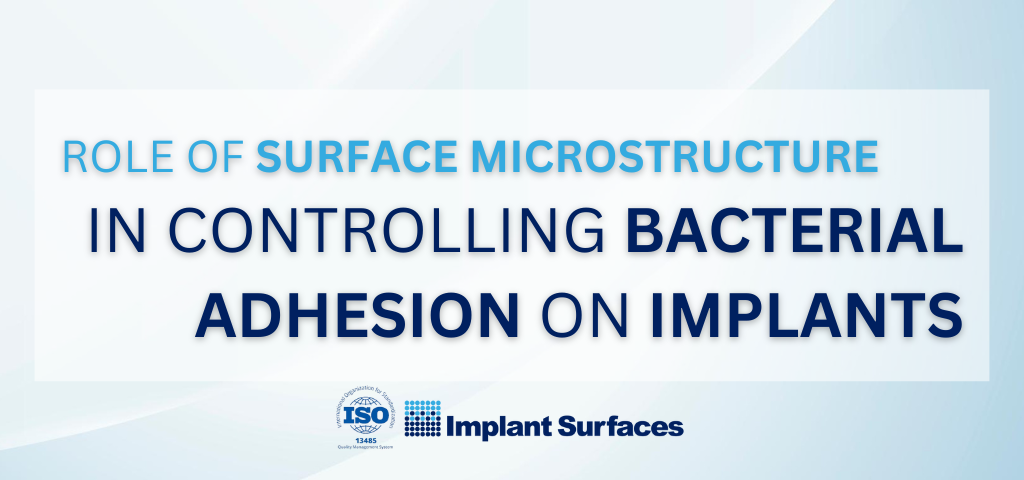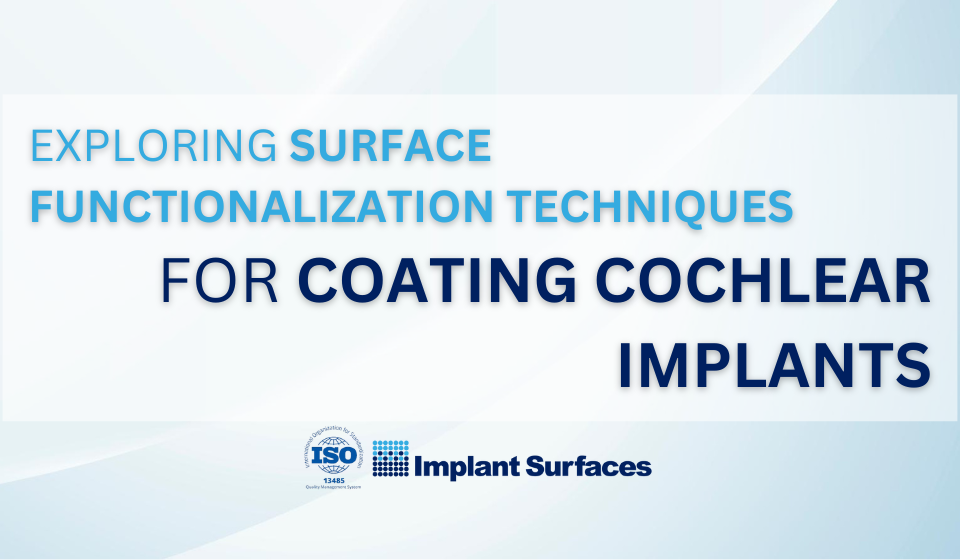
Exploring Surface Functionalization Techniques for Coating Cochlear Implants
May 10, 2024
Surface Modification Strategies for Enhancing Wear Resistance of Hip Resurfacing Implants
May 13, 2024Bacterial adhesion and biofilm formation on implant surfaces pose significant challenges in medical device applications. Understanding the intricate relationship between surface microstructure and bacterial adhesion is crucial for developing effective strategies to mitigate implant-associated infections. In this article, we delve into the role of surface microstructure in modulating bacterial adhesion on implants and explore innovative approaches to enhance implant biocompatibility and prevent microbial colonization.
Surface Microstructure and Bacterial Adhesion:
The surface microstructure of implants plays a pivotal role in dictating bacterial adhesion dynamics. Microscopic features such as roughness, porosity, and topographical complexity influence the initial attachment of bacteria to implant surfaces. High surface roughness and irregularities provide favorable sites for bacterial adhesion, facilitating biofilm formation and subsequent infection. Conversely, smooth and homogenous surface microstructures exhibit reduced bacterial adhesion propensity, thereby enhancing implant biocompatibility and reducing the risk of infection.
Innovative Surface Modification Techniques:
To combat bacterial adhesion and biofilm formation, researchers have developed innovative surface modification techniques aimed at altering implant microstructure to deter microbial colonization. Nanostructured surfaces, created through techniques such as nanoimprinting and electrospinning, offer unique topographical features that inhibit bacterial attachment while promoting cell integration. Additionally, surface coatings infused with antimicrobial agents or bioactive molecules provide an effective barrier against microbial colonization, enhancing implant longevity and performance.
Advancements in Surface Analysis:
Recent advancements in surface analysis techniques have revolutionized our understanding of bacterial adhesion mechanisms on implant surfaces. High-resolution imaging modalities such as scanning electron microscopy (SEM) and atomic force microscopy (AFM) enable detailed characterization of implant microstructure and bacterial interactions at the nanoscale level. Moreover, computational modeling and simulation techniques offer valuable insights into the complex interplay between surface morphology, physicochemical properties, and bacterial adhesion kinetics, facilitating the design of next-generation implant materials with enhanced antimicrobial properties.
Future Directions and Clinical Implications:
As research in implant surface engineering continues to evolve, there is growing optimism regarding the development of implant materials with tailored surface microstructures capable of modulating bacterial adhesion and biofilm formation. By leveraging bioinspired design principles and multidisciplinary approaches, implant surfaces can be engineered to mimic natural antimicrobial surfaces found in biological systems, offering unprecedented levels of protection against implant-associated infections. Ultimately, these advancements hold tremendous promise for improving patient outcomes and advancing the field of implantology towards safer and more reliable medical devices.
Conclusion:
The intricate interplay between surface microstructure and bacterial adhesion underscores the importance of surface engineering in implant design and development. By harnessing the power of innovative surface modification techniques and leveraging cutting-edge surface analysis tools, researchers and clinicians can pave the way for the creation of implant surfaces that resist bacterial colonization and promote tissue integration. As we continue to unravel the complexities of bacterial interactions on implant surfaces, the journey towards safer, more durable, and infection-resistant implants becomes increasingly attainable, ushering in a new era of biomimetic implant design and personalized healthcare.




